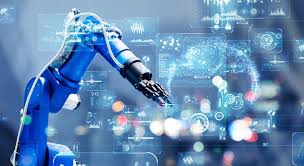Source: urgentcomm.com
As the supply chain and manufacturing wade through the COVID-19 crisis, companies have renewed their embrace of robotics — if with circumspection.
Prior to the advent of COVID-19, manufacturing suffered from tight labor markets and eyed robotics and automation to bolster efficiency and reduce costs. According to the MHI report on the supply chain in 2020, the adoption rate for robotics and automation increased more than any other supply chain technology between 2019 and 2020. Adoption clocked in at 32% and 39% adoption, respectively.
Even with COVID-19 and its associated budget constraints in many sectors, the industry continues to view robotics as a key long-term investment. According to an IDC 2020 supply chain survey, 73% of respondents say that robotics will be important or very important to their organization in the next three years.
Today, robots in the workforce are proficient at specific, repeatable tasks for which they are precisely programmed. So, a warehouse-trained robot may bring a cart from aisle to aisle where human workers pick items, thereby reducing the time needed to locate assets.
“[Robots] can pull heavy carts and be used where there is a lot of wasted walking for workers,” said Guy Courtin, director of partners and alliances at 6 River Systems.
Other uses of robotics in manufacturing, for example, may be highly targeted yet simple to program. One company uses robotics to complete complex sanding patterns on contoured surfaces using a point-and-click interface, resulting in substantial operational efficiencies.
“They have reduced a multiday programming operation down to a 20-minute task,” said Joe Campbell, Universal Robots’ senior manager of strategic marketing and applications, in an article on robots in manufacturing.
COVID-19, E-Commerce Accelerants for Robotics
With the emergence of COVID-19, other factors are driving the use of robotics in the supply chain: the need to minimize transmission of the virus.
Increasingly, even enterprises that previously eschewed robotics have considered automation.
“Since COVID, we have seen an uptick in companies coming back to robotics,” Courtin said. “It helps in a time of reduced labor and enables labor to stay 6 feet apart in warehouses. [We] have had HR staffs that previously blocked it tell us they want to bring automation in.”


